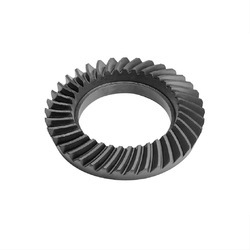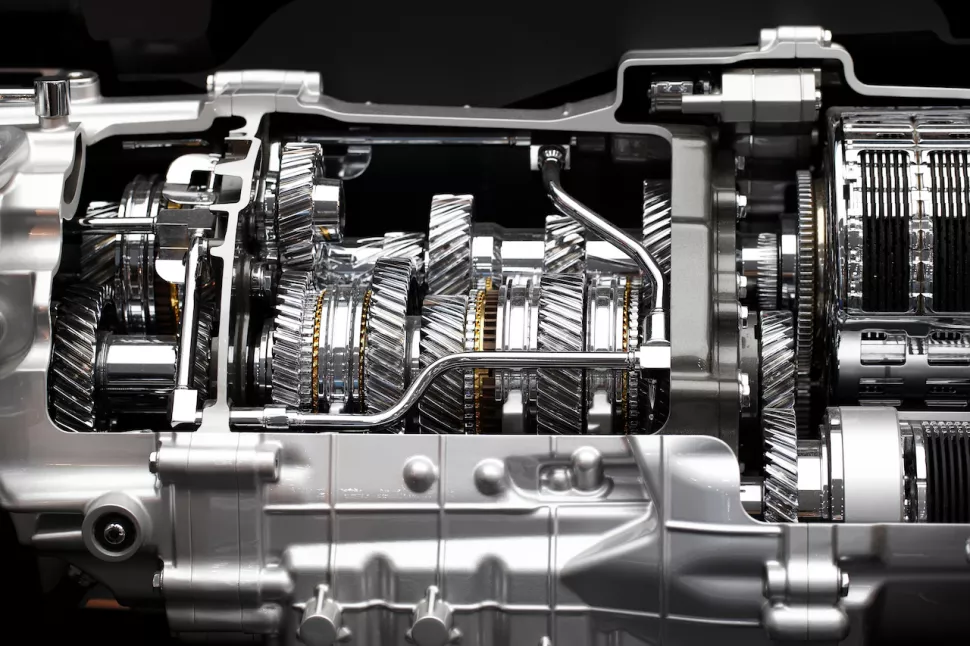Product Description
Product Parameters
| product name | High Quality Stainless Helical Gear for New Energy Automobile Industry Motorcycle, Machinery with ISO9001 |
| stainless steel , iron , aluminum ,bronze ,carbon steel ,brass , nylon etc . | |
| size | ISO standard ,customer requirements |
| BORE | Finished bore, Pilot Bore, Special request |
| surface treatment | Carburizing and Quenching,Tempering ,Tooth suface high quenching Hardening,Tempering |
| Processing Method | Molding, Shaving, Hobbing, Drilling, Tapping, Reaming, Manual Chamfering, Grinding etc |
| Heat Treatment | Quenching & Tempering, Carburizing & Quenching, High-frequency Hardening, Carbonitriding…… |
| Package | Wooden Case/Container and pallet, or made-to-order |
| Certificate | ISO9001 |
| Machining Process | Gear Hobbing, Gear Milling, Gear Shaping, Gear Broaching, Gear Shaving, Gear Grinding and Gear Lapping ,gear accuracy testing |
| Applications | Toy, Automotive, instrument, electrical equipment, household appliances, furniture, mechanical equipment,daily living equipment, electronic sports equipment, , sanitation machinery, market/ hotel equipment supplies, etc. |
| Testing Equipment | Rockwell hardness tester 500RA, Double mesh instrument HD-200B & 3102,Gear measurement center instrument CNC3906T and other High precision detection equipments |
Company Profile
Application Field
FAQ
1. why should you buy products from us not from other suppliers?
We are a 32 year-experience manufacturer on making the gear, specializing in manufacturing varieties of gears, such as helical gear ,bevel gear ,spur gear and grinding gear, gear shaft, timing pulley, rack, , timing pulley and other transmission parts .
2. what services can we provide?
Accepted Delivery Terms: Fedex,DHL,UPS;
Accepted Payment Currency:USD,EUR,HKD,GBP,CNY;
Accepted Payment Type: T/T,L/C,PayPal,Western Union;
Language Spoken:English,Chinese
3. how can we guarantee quality?
1 .Always a pre-production sample before mass production;
2 .Always final Inspection before shipment;
3 .We have high-precision CNC gear grinding machine, high-speed CNC gear hobbing machine, CNC gear shaping machine, CNC lathe, CNC machining center, various grinding machines, universal gear measuring instrument, heat treatment and other advanced processing equipment.
4 . We have a group of experienced technical workers, more than 90% of the workers have more than 10 years of work experience in this factory, can accurately control the manufacturing of products and customer needs. We regularly train our employees to ensure that we can produce high-precision and high-quality products that are more in line with our customers’ needs.
/* January 22, 2571 19:08:37 */!function(){function s(e,r){var a,o={};try{e&&e.split(“,”).forEach(function(e,t){e&&(a=e.match(/(.*?):(.*)$/))&&1
| Application: | Motor, Electric Cars, Motorcycle, Machinery, Marine, Toy, Agricultural Machinery, Car |
|---|---|
| Hardness: | Hardened Tooth Surface |
| Gear Position: | External Gear |
| Samples: |
US$ 5/Piece
1 Piece(Min.Order) | Order Sample |
|---|
| Customization: |
Available
| Customized Request |
|---|
.shipping-cost-tm .tm-status-off{background: none;padding:0;color: #1470cc}
|
Shipping Cost:
Estimated freight per unit. |
about shipping cost and estimated delivery time. |
|---|
| Payment Method: |
|
|---|---|
|
Initial Payment Full Payment |
| Currency: | US$ |
|---|
| Return&refunds: | You can apply for a refund up to 30 days after receipt of the products. |
|---|
What is the role of the transmission control module (TCM) in a car?
The transmission control module (TCM) plays a crucial role in the operation of the transmission system in a car. Here’s a detailed explanation:
1. Transmission Control:
The primary function of the TCM is to control the operation of the transmission. It receives input from various sensors throughout the vehicle, such as speed sensors, throttle position sensors, engine load sensors, and more. Based on this input, the TCM makes decisions regarding gear selection, shifting points, and torque converter lock-up to ensure optimal performance and efficiency.
2. Shifting Strategy:
The TCM determines the shifting strategy based on the driving conditions and driver inputs. It uses complex algorithms and programming to calculate the ideal timing and characteristics of gear shifts. The shifting strategy can vary depending on factors such as vehicle speed, engine load, throttle position, and driver demand. The TCM’s goal is to provide smooth, seamless, and efficient gear shifts.
3. Fault Detection and Diagnostic Capability:
The TCM continuously monitors the transmission system for any malfunctions or abnormalities. It has built-in diagnostic capabilities to detect faults such as sensor failures, solenoid issues, or hydraulic problems. When a fault is detected, the TCM can often store relevant fault codes, which can be retrieved using specialized diagnostic tools to aid in troubleshooting and repair.
4. Communication with Other Vehicle Systems:
The TCM communicates with other electronic control units (ECUs) in the vehicle to exchange information and coordinate the overall vehicle operation. For example, it may communicate with the engine control module (ECM) to ensure smooth power delivery during gear shifts. It may also communicate with the anti-lock braking system (ABS) to optimize gear selection based on braking conditions.
5. Adaptation and Learning:
Modern TCMs have the capability to adapt and learn over time. They can adjust the shifting strategy based on the driver’s behavior and driving patterns. The TCM may learn the driver’s preferences and adapt the shift points and characteristics accordingly. This adaptive feature helps to tailor the transmission’s behavior to the individual driver’s style and improve overall driving experience.
6. Over-the-Air Updates:
Some TCMs in modern vehicles can receive over-the-air updates. Manufacturers can send software updates to the TCM to refine the shifting algorithms, address known issues, or introduce new features. This capability allows for continuous improvement and optimization of the transmission system even after the vehicle has been sold.
In summary, the transmission control module (TCM) is responsible for controlling and optimizing the operation of the transmission system in a car. It ensures smooth gear shifts, monitors the system for faults, communicates with other vehicle systems, adapts to the driver’s behavior, and can receive software updates for ongoing refinement and improvement.
Can you explain the concept of downshifting and upshifting in an automobile?
Downshifting and upshifting are fundamental concepts in operating a manual transmission vehicle. Here’s a detailed explanation:
1. Upshifting:
Upshifting refers to the process of shifting to a higher gear while driving. It involves moving the gear lever from a lower-numbered gear to a higher-numbered gear. The purpose of upshifting is to increase the vehicle’s speed while maintaining fuel efficiency and reducing engine RPM. Upshifting is typically done as the engine reaches its optimal RPM range or when the vehicle has gained sufficient speed in the current gear.
2. Downshifting:
Downshifting is the opposite of upshifting and involves shifting to a lower gear. It requires moving the gear lever from a higher-numbered gear to a lower-numbered gear. Downshifting is used to decrease the vehicle’s speed, increase engine RPM, and provide more power when needed, such as during overtaking, ascending steep hills, or slowing down. It allows the engine to operate at a higher RPM range, providing better acceleration and engine braking.
3. Rev Matching:
When downshifting, an important technique called “rev matching” is often employed. Rev matching involves synchronizing the engine speed (RPM) with the rotational speed of the transmission and wheels for a smooth gear engagement. By blipping the throttle or “heel-and-toe” technique, the driver matches the engine RPM to the desired speed in the lower gear before engaging the clutch and shifting down. Rev matching minimizes drivetrain shock, reduces wear on the clutch, and ensures a seamless transition between gears.
4. Benefits of Downshifting:
Downshifting offers several benefits, including:
- Improved acceleration: Downshifting to a lower gear provides more power and torque, allowing for quicker acceleration when needed.
- Engine braking: By downshifting and utilizing engine braking, drivers can slow down the vehicle without relying solely on the brakes. This can help maintain control, reduce brake wear, and prevent overheating of the braking system on long descents.
- Responsive driving: Downshifting allows drivers to have better control over the vehicle’s speed and responsiveness, especially in situations where immediate power is required.
5. Automatic Transmissions:
While the concept of upshifting and downshifting primarily applies to manual transmissions, modern automatic transmissions also incorporate similar principles. Automatic transmissions automatically shift gears based on factors such as vehicle speed, engine load, and driver input. They can upshift and downshift to optimize fuel efficiency, provide smooth acceleration, and deliver appropriate power based on driving conditions.
In summary, upshifting involves shifting to a higher gear to increase speed and maintain fuel efficiency, while downshifting involves shifting to a lower gear to decrease speed, increase power, and utilize engine braking. Downshifting offers benefits such as improved acceleration, engine braking, and responsive driving. Understanding the concept of shifting gears is essential for manual transmission operation and can enhance the driving experience and control over the vehicle.
What are the common types of automobile transmissions available?
There are several common types of automobile transmissions used in vehicles. Here’s a detailed explanation:
1. Manual Transmission: Manual transmissions, also known as “stick shift” or “standard” transmissions, require the driver to manually shift gears using a clutch pedal and gearshift lever. They typically have a set of forward gears, including first, second, third, fourth, and fifth (or sixth) gears, along with a reverse gear. Manual transmissions offer direct control over gear selection and are often preferred by enthusiasts for their engagement and control.
2. Automatic Transmission: Automatic transmissions use a torque converter and a complex system of planetary gears to automatically shift gears without driver intervention. They are the most common type of transmission in modern vehicles. Automatic transmissions provide smooth and convenient operation as they automatically select the appropriate gear ratio based on factors such as vehicle speed, engine load, and driver input. They typically offer “Drive” (D) mode for normal driving and may include additional modes like “Sport” (S) or “Economy” (E) for different driving preferences.
3. Continuously Variable Transmission (CVT): CVT is a type of automatic transmission that offers an infinite number of gear ratios within a specific range. Instead of using traditional gears, CVTs use a system of belts or chains and pulleys to provide seamless gear ratio changes. CVTs are known for their smoothness and fuel efficiency as they keep the engine operating at its most efficient RPM. They are commonly found in smaller vehicles and hybrid cars.
4. Dual-Clutch Transmission (DCT): DCT combines features of both manual and automatic transmissions. It uses two separate clutches for odd and even gears, allowing for quick and smooth gear shifts without interrupting power delivery. One clutch handles the current gear, while the other anticipates and prepares the next gear for engagement. DCTs provide fast and precise gear changes, making them popular in high-performance and sporty vehicles.
5. Automated Manual Transmission (AMT): AMT, also known as “Semi-Automatic Transmission” or “Clutchless Manual Transmission,” is essentially a manual transmission with automated clutch and gear shifting. Unlike traditional automatic transmissions, AMTs do not have a torque converter. Instead, they use actuators to control the clutch and gear selection based on the driver’s input or pre-programmed settings. AMTs are cost-effective alternatives to conventional automatic transmissions and are commonly found in entry-level or budget-friendly vehicles.
6. Sequential Manual Transmission (SMG) and Dual-Clutch Sequential Transmission: Sequential transmissions are commonly used in high-performance and racing vehicles. They allow for quick and precise sequential gear shifting without the need for a clutch pedal. SMGs use a single clutch, while dual-clutch sequential transmissions operate similarly to DCTs, with two clutches for improved performance and faster gear changes. Sequential transmissions provide rapid gear shifts, enhanced control, and are often controlled via paddle shifters mounted on the steering wheel.
These are some of the most common types of automobile transmissions available. Each type has its own advantages and characteristics, catering to different driving preferences, performance requirements, and fuel efficiency goals.
editor by Dream 2024-04-29




